Lily Gladstone Is Seizing the Moment — and Making History
- Oops!Something went wrong.Please try again later.
- Oops!Something went wrong.Please try again later.
- Oops!Something went wrong.Please try again later.
- Oops!Something went wrong.Please try again later.
- Oops!Something went wrong.Please try again later.
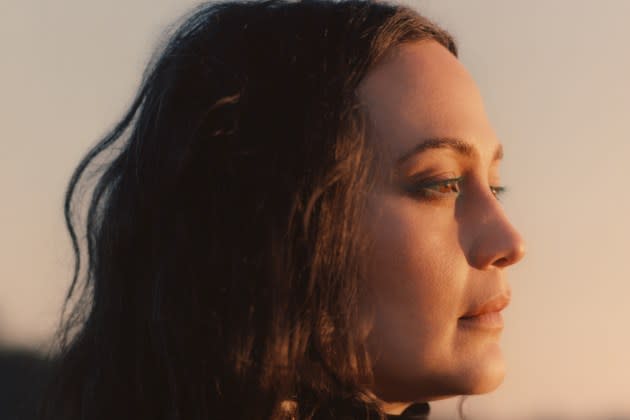
When Lily Gladstone was growing up on the Blackfeet Indian Reservation in rural Montana, acting in plays was an escape from bullies, who targeted her for being “verbose and goofy.” The idea came from her father, a Native man of Piegan Blackfeet and Nez Perce heritage, whom she describes as “a bit of a wizard” and “had me convinced when I was younger that he was able to move clouds.”
“My dad saw early on when I was onstage that I just thrived,” Gladstone says. “When I was nine, it was the worst of it. I was struggling to keep friendships, bullied a lot. And he very matter-of-factly said, ‘Oh, it’s OK, honey. They’re all going to be your friend someday when you win your Oscar.’”
More from Rolling Stone
Greta Gerwig's Oscar Snub for 'Barbie' Is Classic Academy BS
'No Ken Without Barbie': Ryan Gosling Slams Greta Gerwig, Margot Robbie Oscar Snubs
Why Charles Melton's Oscar Snub for 'May December' Really Stings
She smiles. “Like I said, my dad’s a little bit of a wizard. And when you’re a kid and your dad who can move clouds tells you something like that, you think it’s true.”
Now, all these years later, Gladstone may become the first Native American winner for acting in Oscar history for her quietly powerful turn as Mollie Burkhart, an Osage woman preyed upon by her husband, Ernest (Leonardo DiCaprio), and his rapacious uncle William Hale (Robert De Niro) in Martin Scorsese’s Killers of the Flower Moon. Adapted from David Grann’s bestselling nonfiction book, it’s a harrowing portrait of the Reign of Terror, a period in the 1920s when Osage were systematically murdered by white settlers for the headrights to their oil-rich land. Gladstone’s Mollie is the film’s beating heart, reflecting her people’s pain through her eyes.
It’s that ability to evoke empathy that first caught Scorsese’s attention in Kelly Reichardt’s 2016 film Certain Women, in which Gladstone played a lonely rancher who finds a connection with the teacher of her law class, played by Kristen Stewart. The scene of Gladstone and Stewart in a parking lot, Gladstone’s character yearning for something more between them and Stewart’s confused by her depth of feeling, is still talked about glowingly in cinema circles.
“There are so few actors who trust in stillness, quiet — and that trust comes from an extremely sharp understanding of their own presence,” Scorsese says of Gladstone. “Actors used to call it their ‘instrument’ — maybe some still do. Lily is in complete command of her instrument. It’s rare.”
Cut to 2019 and Gladstone, in her mid-thirties with a few indies and small TV roles in shows like Room 104 and Billions under her belt, was about to call it quits. That standout turn opposite Stewart in Certain Women hadn’t been the big Hollywood breakthrough she thought it might be. As she sat in front of the computer ready to sign up for a data-analytics course, she received a notification for a Zoom meeting with Scorsese, who was beginning to cast Killers of the Flower Moon.
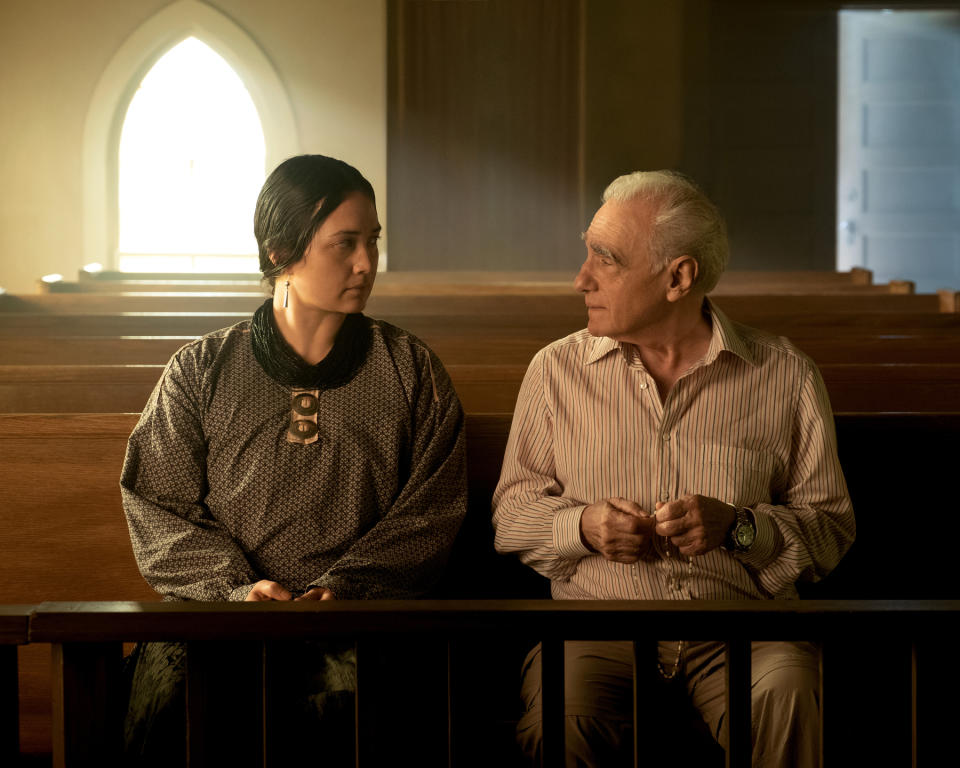
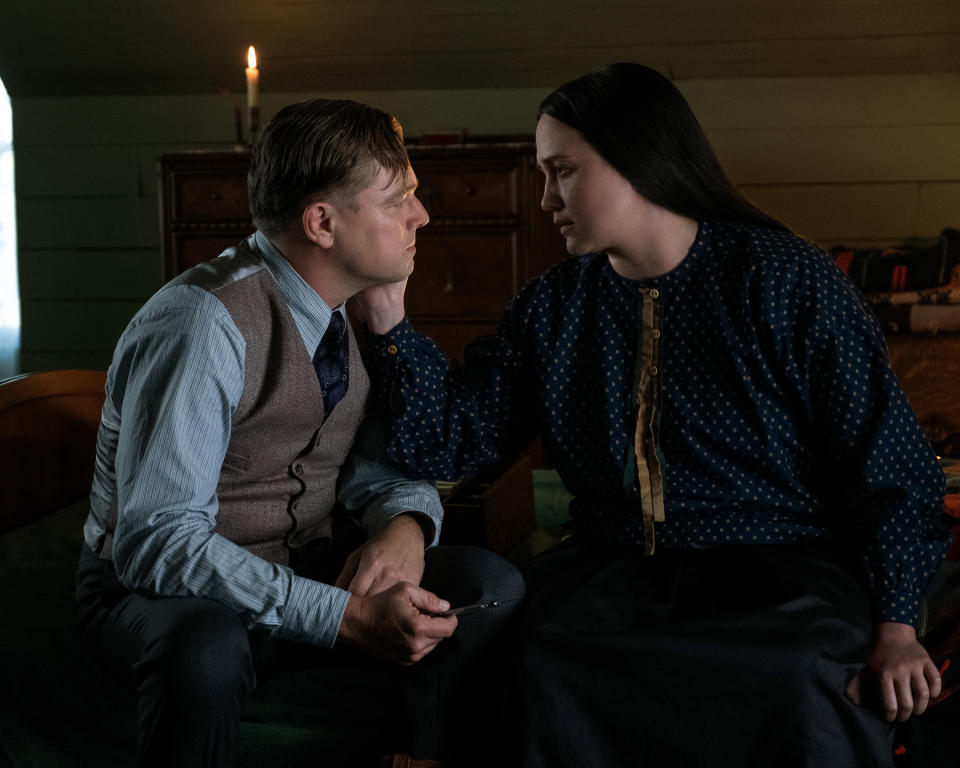
“I first met her on Zoom, and then on a follow-up Zoom with Leo DiCaprio,” Scorsese recalls. “I had pretty much made up my mind at that point, but we did an audition and that was it. It was Lily.”
When Gladstone found out she got the part, she lost it.
“I screamed and threw my phone across my parents’ living room,” she says. “That’s my response to when things are overwhelming. And it was on Mollie Burkhart’s birthday. Nobody planned it that way. The thought that it was Mollie’s birthday meant that this was bigger than me.”
The next thing Gladstone did was get back in front of that same computer to go online and start researching the Osage language. She took classes for seven weeks, studying with consultants Christopher Cote and Janis Carpenter.
She gained such facility with the language and culture that Scorsese entrusted her with rewriting several scenes involving her character, including one in which she labels Ernest a “coyote” during a car ride, which came from an Osage story about “tricksters” that she’d heard from Cote, and another where Mollie and her sisters are gossiping about the white men in their orbit. Gladstone credits Cote and Wilson Pipestem, an Osage attorney who invited Scorsese to a dinner with Osage elders in Oklahoma prior to production to educate him on their people, with helping her embody Mollie. According to Gladstone, in the version of the script that she auditioned on in 2019 prior to Scorsese and DiCaprio meeting with the Osage, there were three scenes between Mollie and Ernest. The script was eventually changed to focus less on the FBI’s investigation into the Reign of Terror and more on the Mollie-Ernest relationship. “Their voices, especially Wilson Pipestem’s, did a lot to inform Mollie, and a lot of the scenes and lines that were rewritten came from him sharing stories,” explains Gladstone. “There’s an Osage saying that if you have a sister you have wealth, so that became a line in the movie. It’s the last thing that Mollie says to Anna: ‘You’re my wealth.’ The way a lot of cultures are elated about the birth of a baby boy, the Osage feel that way when a girl is born.”
That’s one thing the Osage and Blackfeet have in common: Women are paramount.
“We’re matrilocal, so women own everything,” says Gladstone. “With the Blackfeet, the only thing a man owns is his saddle. He doesn’t even own his horses. So, if he screws up, the sign that she doesn’t want him there anymore is he’ll come home and there will be a saddle sitting outside the home.”
She adds, “The Osage are also patriarchal in the sense that it’s the men who are speaking and the face of the family. But everything else is the woman. If the man is the face, the woman is the entire body.”
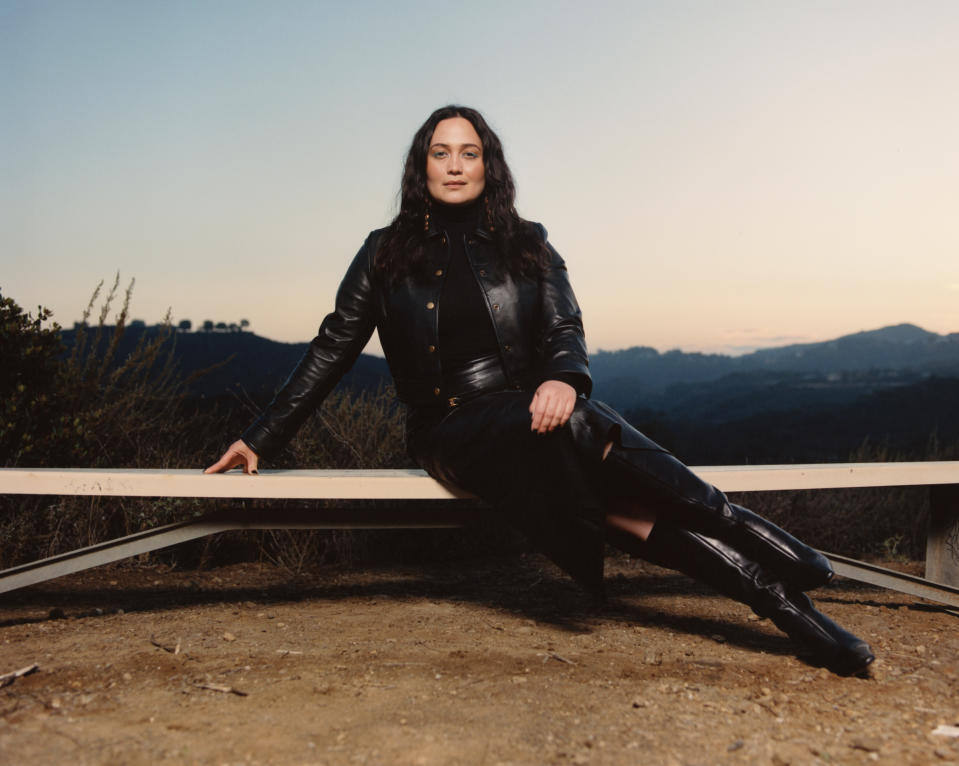
Gladstone recently shared that she goes by she and they pronouns as a way of “decolonizing gender for myself” and as a tribute to her Blackfeet heritage.
“Gender is nonbinary,” she says of the Blackfeet. “Our language doesn’t have gendered pronouns. People are only referred to as ‘they’ in our language, and your gender is implied in the name you are given.”
The Oscar-winning DiCaprio, whose Ernest slowly poisons Mollie over the course of the film, proved a generous scene partner for Gladstone, allowing her to revise scenes like the aforementioned sequence in the car. She’d been a DiCaprio fan dating back to What’s Eating Gilbert Grape, a film she says “a lot of Natives like” because even though they are white, “the family in that film is reminiscent of a lot of families in Indian country.”
Since Native American representation has always been poor in Hollywood, Gladstone rarely saw people who looked like her onscreen. So, she often found herself rooting for the Hollywood analogues: Val Kilmer’s Madmartigan in Willow and Return of the Jedi’s forest-dwelling critters.
“I was only into Star Wars because I was into the Ewoks,” she says, smiling wide. “I didn’t know this then, but they’re such a beacon of Indigenous resistance. And they rocked it. They brought the Empire down, I’m sorry.
“Even though I’m horribly disappointed by J.K. Rowling now, when Harry Potter was out there were a lot of people who felt the conversation about bloodlines and Muggles was a conversation about Native bloodlines,” she continues. “We find ways to connect.”
While describing herself as “more of an Ethan Embry girl” growing up, owing to his roles in Empire Records and Can’t Hardly Wait, one of the DiCaprio films she enjoyed as a youngster provided an access point to understanding Mollie and Ernest’s toxic union.
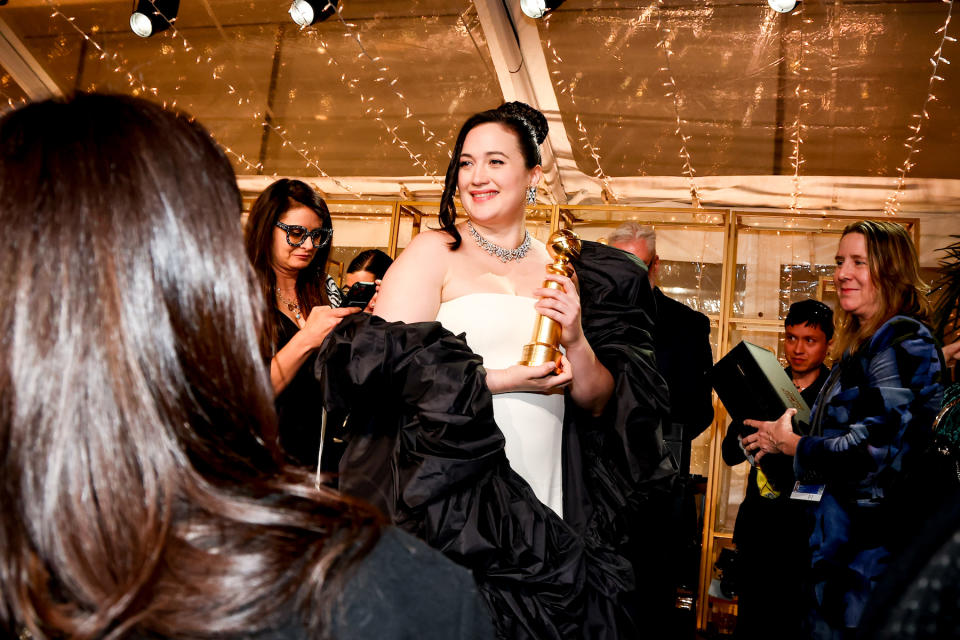
“The one time I maybe had a Leo crush was Man in the Iron Mask — because of the duality,” she shares. “The crush was on not King Louis but Philippe, the sweet one. He got to put all of his evil over here and all of his goodness over there, and that allowed me another way to understand Mollie’s love for Ernest.”
The Mollie-Ernest relationship in Killers of the Flower Moon, and the film itself, has not been without criticism. Devery Jacobs, a First Nations actress who played Elora on Reservation Dogs and wrote for the series, tweeted that she found that movie “fucking hellfire” to watch due to its focus on “the horrors white men inflicted on us,” and while Gladstone “carried Mollie [with] tremendous grace,” she thought “each of the Osage characters felt painfully underwritten, while the white men were given way more courtesy and depth.”
It was a complicated situation for Gladstone, who not only appeared on Reservation Dogs, but has been close to Jacobs for years. When I ask her about it, her face drops.
“We’re friends. I crashed on her couch in Toronto when Certain Women played at TIFF. I don’t want to bring heat back on her for this because I think that’s unfair. Her reaction is hers,” offers Gladstone. “Her reaction is a response to a lot of trauma that particularly Native women feel seeing these things for the first time. I had a lot of time acclimating myself to the script. The Osage people have had their lives to understand this history. The process of making this movie gave a lot of people a chance to speak. Ultimately, Osage reaction is what I care about the most.”
And Gladstone, who will be forever tethered to the Osage through Killers of the Flower Moon, hopes to keep that relationship alive long after awards season has come to an end.
“I didn’t cut and run. Neither did Marty. Neither did production. There are still relationships there,” she says. “A lot of times, growing up on a reservation, a film leaves, and you’ll go, ‘What just happened?’ The conversations need to keep happening.”

Since the film’s release, life has changed quickly for Gladstone — and she appears to be taking “the wild ride” in stride, shuffling off from one industry fête or interview to another. After becoming the first Indigenous person in history to win Best Actress at the Golden Globes, along with taking home Best Actress honors with the National Board of Review and the New York Film Critics Circle, she’s the proverbial frontrunner for the Oscar.
Recently, Gladstone was seated next to David Fincher at a LACMA film screening and the two struck up a conversation, with the Zodiac director offering her advice for navigating the award season. “He compared it to his friend teaching his teenage daughter to drive on the freeway: ‘Don’t let how fast other people want to drive bully you into going faster than you’re ready to,’” she remembers, before grinning to herself: “Things move at their own pace.”
Hair by MARC MENA at EXCLUSIVE ARTISTS using SISTER SKY. Makeup by MOLLY GREENWALD at A-FRAME AGENCY using CHEEKBONE and PAT MCGRATH. Styling by JASON REMBERT. Outfit by COACH. Bodysuit by WOLFORD. Boots by JIMMY CHOO. Earrings by JENNIFER YOUNGER. Photographic assistance by SAUL BARERRA. Styling assistance by WILTON WHITE
Best of Rolling Stone

